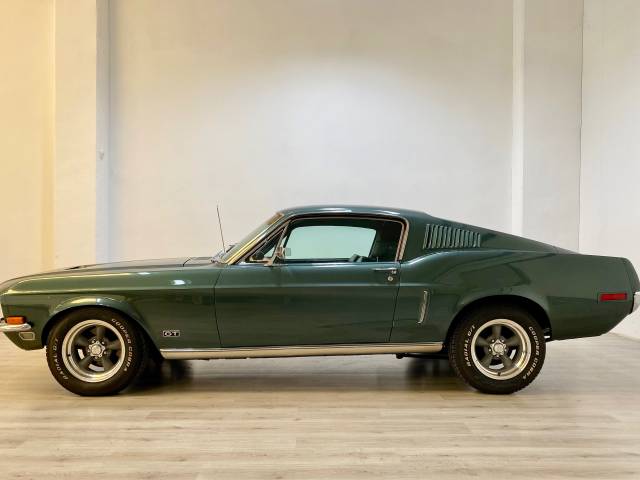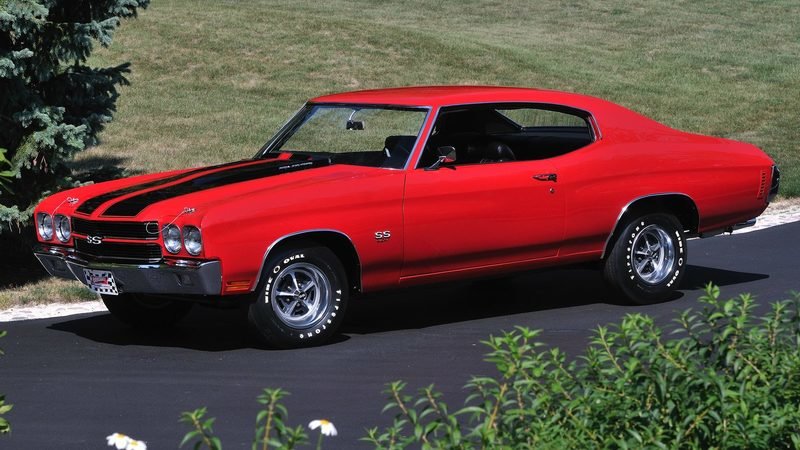
Old-fashioned muscle cars were once popular for those who wanted fast but could not afford a more expensive vehicle. Luckily, today's convertible muscle cars offer all of the fun of the classic models. Here are four of the most beloved convertible muscle car models. Read on for more information. We'll look at the Chevrolet Camaro, the Pontiac Firebird, the Dodge Challenger, and the Plymouth Superbird.
Chevrolet Camaro
If you're looking for a classic muscle car, look no further than a 1968 Chevrolet Camaro. The convertible's engine is not a V8 like its predecessors. Camaro’s turbo-four produces 295 horsepower and 275 lb.ft of torque. You can reach 60 MPH in 5.5 seconds. This engine does not emit the same exhaust note as a V8. Although the Camaro may not have the same performance as a V8, the Turbo 4 is just as fun. The real fun lies behind the wheel, even though the car boasts advanced safety features.
The interior is sparse, but it's pleasant enough. The cupholders are a decent size, and the back seat is removable and can be used as extra storage space. The premium trim offers hard plastics and a quiet, pleasant ride. The climate control center is conveniently located next to the shift lever. It makes it easy to change the temperature or the air conditioner. Despite these limitations, the Chevy Camaro's interior is a great place to spend the day with your family.

Dodge Challenger
The Dodge Challenger coupe was a twodoor imported from Mitsubishi. You could choose between a 1.6liter I-4 engine and a more powerful 2.6liter, 105-horsepower four cylinder engine. In 1981, the Challenger was redesigned and survived until 1984 when it was replaced with K-platform compacts by Chrysler Corporation and an import from Mitsubishi. The Challenger's long-lasting popularity made it a classic model.
The company planned to sell the Challenger as a convertible before it was introduced in 2008. In fact, the convertible Challenger was spotted being hauled to a scrap yard as a prototype. It is now in its thirteenth year of production. Although its popularity has declined, the Challenger is still a very desirable muscle car. It can be modified to many extents. These are just a few of the features that make Challenger convertibles desirable options for muscle car enthusiasts.
Pontiac Firebird
The Pontiac Firebird was a 1967 convertible muscle car. It was a two-door coupe with an F-body engine that produced 165 horsepower. You could also get optional Tri-Power carburation. GM initially considered the Firebird a risky option as it wasn't sure how it would sell. The basic principles of a regular car were used to create something entirely new.
The 1968 model was given a completely new look. It received new wraparound side marker lamps, a new front fascia and the Pontiac Arrowhead logo. It also got a new steering wheel, and an instrument panel. This made the Firebird more functional than before. It retained Firebird's heritage of being performance-driven, despite its new design. Its distinctive design is still found on classic Pontiac cars.

Plymouth Superbird
The Plymouth Superbird American muscle car was designed by Chrysler engineers for NASCAR homologation. The super-fast car's wedge-like nose was revolutionary at the time. It also had a two-foot-tall rear spoiler, which allowed it reach speeds that were impossible just a few short years before. Superbird was a big hit on the track as well as the streets. The company produced approximately 2,000 Superbirds in 1970.
Three engine options were available for the Superbird: the 440 Super Commando V8, the 426 Hemi H8 and the 440 Super Commando six barrel. Three two-barrel carburetors were available for the 440 Super Commando Six-Barrel, which produced 390 horsepower. Also available was the 380 hp 440 engine (240 kW), and a 375hp 280 kW engine.
FAQ
What are the requirements for an automotive technician?
High school graduation or GED is required with excellent grades in English and math. You must also be able to read, and write. The written test will be passed and you will then have to take several practical exams before you can begin work.
What kind of car mechanic jobs exists?
For car mechanics, there are three main areas for employment:
-
Automotive repair shops
-
Dealerships
-
Independent garages
Automotive repair shops
This is the place most people begin to consider becoming mechanics. It's the easiest way for most people to get started. You have two options: work in an existing shop or open your own.
If you choose to work at a store, you need to join a union. Once accepted into the union you will be trained by the union.
After completing the training, you'll be ready to start work.
If you plan to open your own garage you will need to register with government. Once you have registered, certain standards will be enforced.
After you register, you will be granted a license for your garage to operate.
Your license allows for minor repairs and spare parts sales. It won't allow you to fix major engine problems.
In addition to selling spare parts, you'll also be expected to offer advice and guidance to customers.
Dealership jobs
Most dealerships employ mechanics who can specialize in a particular area of the car. For example, they might only deal with brakes or only replace tires.
Some dealerships have the option to hire general mechanics who can take care of all aspects.
These positions often require applicants to undergo specific training before being allowed to work. Employers can then choose the best candidates for their job.
Some dealerships even recruit graduates straight from university. These graduates already have a basic understanding of mechanical engineering, so they are able to learn all about cars.
Independent garages
Independent garages aren't associated with any particular dealership. Instead, independent garages tend to concentrate on providing high-quality services.
Independent garages don't have to be associated with any particular company. This allows them to offer higher wages. Because these jobs don't have to be associated with any company, they can generally offer better wages than dealerships.
Independent garages can be just as good places to work, but this does not mean they are better. Many business owners prefer to be in control of their businesses than to delegate it to employees.
You may find yourself working for long hours and not having control over the day.
It is also possible to expect lower wages than you would if working at a dealer.
There are many jobs that can be switched between. To work at a dealership you will need to contact your employer to see if he is open to the idea of hiring you.
Or, if your dream is to work for an independent garage you can contact the owner directly.
The bad news is that finding a new job isn't always easy. There are many factors that affect how much you make.
Consider, for example, what type of vehicle you are repairing and whether additional labor charges will apply.
What is the distinction between a mechanic or an automotive technician?
They are both similar, but not identical. An automotive technician maintains cars, while a mechanic repairs them.
A mechanic must possess good manual dexterity, and be able perform simple tasks efficiently. They should be able to accurately diagnose problems and repair them efficiently.
An automotive technician must be more technically proficient than a mechanic. They must be capable of reading blueprints and using tools such as drills, wrenches, etc.
They must also be able to carry out complex procedures safely. They should also be familiarized with the different types of engines as well as electrical systems.
They must also understand the interplay of different parts.
The result is that a mechanic often earns less than an auto technician. Both jobs offer many possibilities.
To work as an automotive mechanic, do I need a degree? What about part-time study?
It is not essential, but it is helpful. Employers prefer applicants who have completed a full-time degree. This shows you have put in the work and achieved success.
This doesn't necessarily mean you can't continue to work while studying. Some universities allow students the flexibility to finish coursework during summer vacations and resume their studies later in year. Others let students take classes part-time throughout the year.
Statistics
- There were 749,900 jobs available for automotive service technicians and mechanics in 2016, which is expected to grow by six percent through 2026. (jobhero.com)
- According to the BLS, total auto technician employment is expected to exceed 705,000 by 2030. (uti.edu)
- According to the BLS, the median annual salary for automotive service technicians and mechanics in the United States was $44,050 in May 2020. (uti.edu)
External Links
How To
How to Become an Automotive Technician
Automotive technicians provide repair and maintenance services to vehicles. He/she works at car dealerships, auto shops, garages, service centers, etc. Customers can rely on him/her to fix their cars, trucks and motorcycles. A technician in automotive must be able diagnose and repair problems quickly, safely, accurately, efficiently, and effectively.
An associate degree should be obtained from a vocational school if you wish to work as an auto technician. After completing the program, he/she must pass ASE certification. ASE stands for American Society of Mechanical Engineers. There are two sections to the ASE certification test. The first section tests for mechanical knowledge, the second for practical skills. To pass the test you must go to one of the authorized testing facilities. These testing sites can be found online and through your local dealer.
Before becoming an automotive technician, a candidate must pass the test. This process can vary depending on where the applicant lives. Some states require that candidates attend training courses, while others permit them to learn independently. Some states allow technicians to become licensed right away after receiving their license. While others wait until they have had at least six years of experience as an automotive technician.
An applicant should apply to a local auto shop in order to start their career as an automotive technician. Once hired, most new employees start out working as apprentices. Apprenticeships typically last three years. During this time, a student learns how to perform basic repairs, such as changing oil, adjusting brakes, replacing tires, cleaning spark plugs, inspecting engine compartments, and performing routine maintenance. Some students learn how to do advanced repairs, such as installing air filters, replacing shocks, repairing engines, and replacing transmission fluids. Many schools offer classes during normal business hours. Some schools also offer evening classes when needed.
When a student has completed his/her apprenticeship, they become a journeyman. Journeymen usually spend four to five year learning how to install major systems like transmissions, differentials steering gear, suspensions, drive shafts, and steering gear. They learn how to do complex repairs such as remanufacturing engines, rebuilding transmissives, and troubleshooting electronic components. Because they have a good understanding of the job and what customers expect, many employers prefer to hire journeymen.
Once a candidate passes the required exams and is granted a license, they might consider opening their own shop. The Bureau of Labor Statistics estimates that there were nearly 1.7 million jobs available for automotive mechanics in 2010. This figure is expected to rise 18 percent between 2009-2020. Candidates who decide to open their own business should be prepared to invest thousands in equipment and supplies.
There are many factors that affect the salary of an automotive technician, such as where they live, their education and experience. A jobless person could make an average of $20,000 annually. Someone with only a high school diploma could earn around $21,000 per year. An associate's degree earns approximately $24,000 annually. Technicians with bachelor's degrees earned about $27,000 per year. Masters' degree holders earn around $32,000 per annum. Salaries are increasing so that a professional earning less than $30,000 could expect to make $40,000 in a few years.